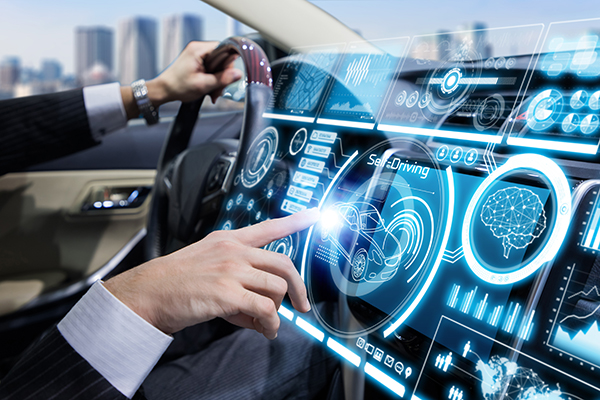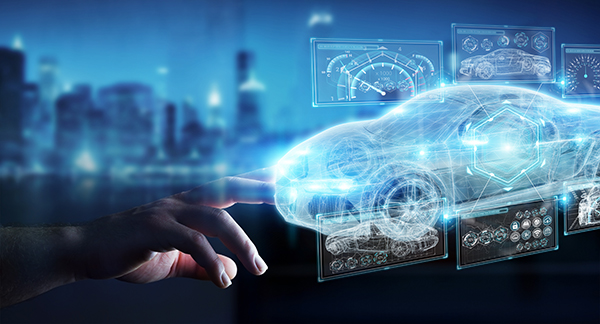
|
Automated driving is not the answer in every situationAn interview with Prof. Frank Köster Professor Frank Köster is the founding director of the Institute for AI Safety and Security at the German Aerospace Center (DLR) and one of the coordinators of the joint SET Level project, which focuses on safety in the context of automated driving. In this interview, he explains the importance of simulation and artificial intelligence for the development of automated vehicles. 
Question: Prof. Köster, as the director of an institute at the German Aerospace Center why are you involved with autonomous driving? Köster: That only seems strange at first glance, but if you take a closer look at the DLR, you'll see that we not only focus on topics related to aerospace but also on energy, transportation, safety and digitalization. I actually launched my career at the DRL in 2007 in the field of transportation and have been involved with automated driving ever since. Question: What do you think will come first, autonomous driving or autonomous flying? Köster: It's hard to say, because both domains face their own specific challenges. Generally speaking, most experts now share the view that truly autonomous systems still lie very far in the future. Another major step forward in this context was taken at the end of last year and the beginning of this year with approval of the Drive Pilot from Mercedes. Although the functionality is only available on freeways and up to a speed of 60 km/h, it does provide customers with considerable added value. Question: What are the biggest technical challenges when it comes to implementing automated driving functions? Köster: Key components of automated driving functions are accelerating and braking, staying in lane, and adjusting the position in lane if another vehicle suddenly encroaches in that lane. These are well under control on freeways at moderate speeds. If, however, you want to increase your speed from for example 60 to 130 km/h, this poses quite a challenge because you have to look farther ahead and also take the traffic behind you into account. This places much greater demands on the sensor technology, especially if the vehicle also is to change lanes in such situations. Things become even more complex when you leave the freeway and move onto highways. The same applies to urban scenarios where you have to expect more random patterns of behavior. 
Question: And where do you see legal and ethical problems? Köster: Let's start with the legal aspects. The way some regulations are formulated is open to interpretation, for example that you have to be ready to assume control in an appropriate timeframe. What exactly does that mean? Another challenge is that the vehicles offer different functional scopes and behave differently in certain traffic situations. Do I as the driver need to know this and perhaps even have to take this into account so that I can determine whether or not the vehicle is functioning correctly? When it comes to ethics, research shows that the dilemmas that have long been discussed have no practical relevance in observable accident scenarios. Generally speaking, automated vehicles should be designed to avoid any form of collision. Of course, there may be individual accident situations that a driver might have handled better. When compared to the situation as it stands today, however, an automated vehicle can definitely bring about an increase in safety. Question: How important are simulations when it comes to developing automated driving functions? Köster: Simulation plays an important role in different phases of the automotive value chain, from designing the vehicle and developing the requirements framework that the vehicle has to map or fulfill to optimizing the driving functions in the virtual environment through to systematic testing using predefined test catalogs and scenarios. It probably extends even further to include the aftersales process, during which software updates for updating the driving functions are also subject to simulation-based testing prior to their rollout. Simulation is therefore very important for automated driving and a key aspect in the SET Level project. Question: What objectives are you pursuing in the project? Köster: We are focusing on simulation and the associated technology, i.e. on the question of how the architecture of the simulation tools should be structured and which core processes we want to map with it. Another important aspect that PROSTEP is looking at in detail is documentation and thus, for example, creating the basis for a safety argument: we document what we have tested and what the results of that testing were so that we are able to build a watertight argument with regard to safety. This applies not only to simulation but also to other test equipment, e.g. the test bench or tests in the field. The V&V Methods project, for example, is taking a closer look at the other test equipment. 
Question: What roles does AI currently play when it comes to analyzing complex driving situations? Köster: AI is a topic that is very much on my mind, especially from the perspective of the newly founded DLR Institute for AI Security. It can serve as an extremely good tool in some areas – just think about the whole issue of perception. If you use a camera-based system for this purpose, an important step is extracting and classifying the objects in the vicinity of the vehicle. AI is clearly superior to conventional algorithms in this context. The challenge here, however, is that the camera systems also open up new avenues for attacking the AI-based functions in the vehicle, for which other sensor technology has to compensate. Question: You focused on AI in your doctoral thesis. What progress has been made since then? Köster: I did indeed examine the methods used in AI in my dissertation and also looked at both evolutionary algorithms and neural networks. 
Question: There is often a lack of training data for methods like deep learning. Can shared data spaces like GAIA-X or Catena-X help remedy this situation? Köster: I believe that these types of data and service ecosystems are important for the entire value chain in the automotive industry. They make it possible to provide access to a much greater amount of data across company boundaries than each individual company can access on its own. That is another reason why we are actively involved in these projects. However, a second important aspect in the context of SET Level is the fact that in the future we will be generating a lot of this training data synthetically, i.e. based on simulations. Environmental systems are also constantly changing, for example when cities redesign their infrastructure and integrate bike lanes to a greater extent in the traffic lanes. This must be taken into account when testing automated vehicles. Here, the various data sources – or in the future also data spaces – that are collated with GAIA-X provide important input. Question: Is the enormous amount of time and effort being invested in automated driving in urban environments warranted? Köster: That's an interesting question. Do we need vehicles that drive fully automatically in every conceivable situation, or can much added value also be generated in certain situations or elements of the traffic system? In many cities, you have for example a public transportation system that runs from the outskirts to the city center. Here it makes sense to fully automate the shuttles and operate them without a driver because you are familiar with the operational design domain and can implement appropriate safety strategies. If you want to support sharing concepts, you can for example automate only vehicle pick-up and drop-off via a hub. This may make it easier for people to forgo having their own car. Wanting to driving fully automatically through the narrow streets in the center of Braunschweig, where I live, on the other hand, poses an enormous challenge and in the future might be less and less in keeping with urban planning concepts. Question: During your studies, you also explored the field psychology and did a lot of work in interdisciplinary teams comprising computer scientists, engineers and psychologists. What psychological stresses will the occupants of automated vehicles have to cope with? Köster: If things are done properly, hopefully none. There is a lot of research being conducted on how to integrate humans in such vehicles, especially when they have to take over the driving task again. What you want to avoid is a situation in which you, as the driver, have to keep an eye on whether the vehicle is functioning correctly because this is much more cognitively demanding than performing the task yourself. Otherwise, automated driving in the future would probably be no more stressful than riding in a bus, train or cab. Professor Köster, thank you very much for talking to us. About Professor Köster Prof. Frank Köster has been working at the German Aerospace Center (DLR) since 2007, where he was, among other things, head of the Automotive department and head of development for the Automotive, Railway Systems, Public Transport and Traffic Management departments at the Institute of Transportation Systems. He has been director of the newly created DLR Institute for AI Security since December 2020. At the same time, he heads up the Intelligent Transport Systems section in the Department of Computer Science at the University of Oldenburg, where he studied information technology, earned his doctorate and qualified as a professor. While working on his doctorate, he examined different approaches to modeling and simulation and also addressed the question of how simulation models can be explained with the help of data mining and artificial intelligence. |
|
| © PROSTEP AG | ALL RIGHTS RESERVED | IMPRINT | PRIVACY STATEMENT | YOU CAN UNSUBSCRIBE TO THE NEWSLETTER HERE. |
